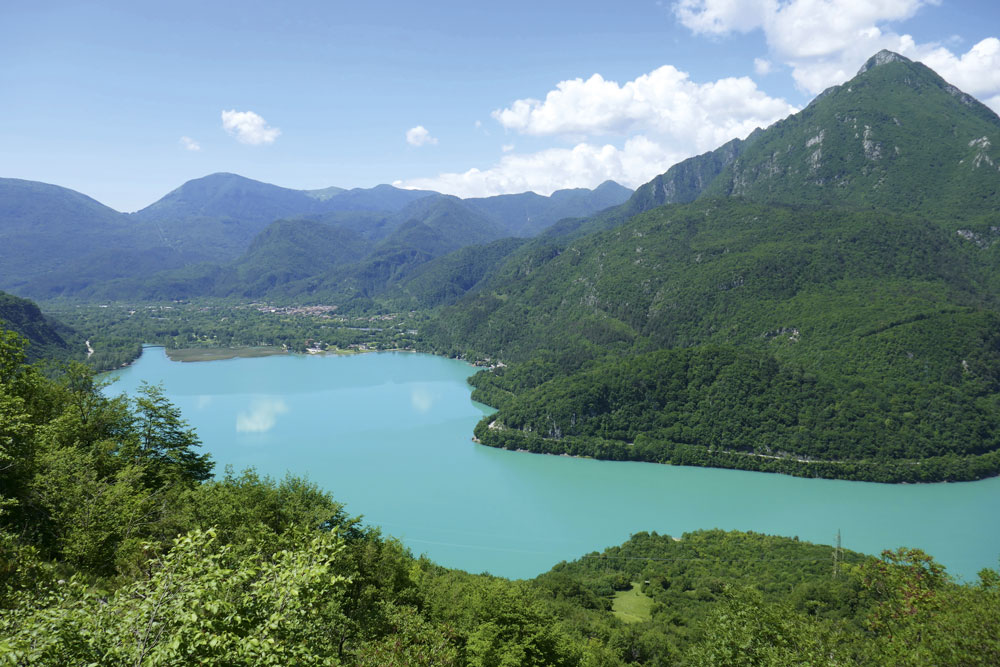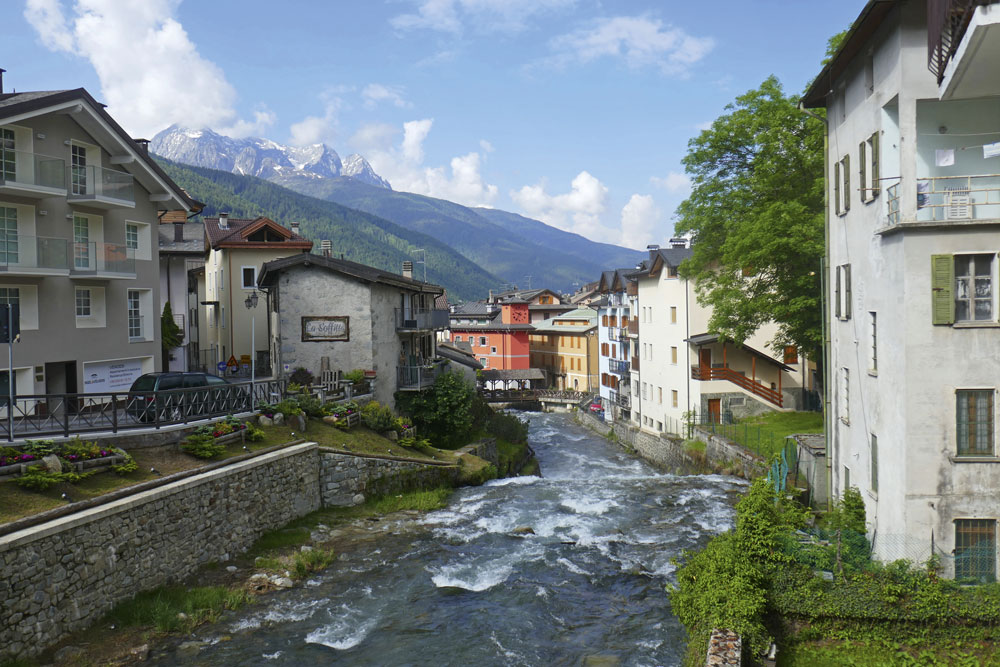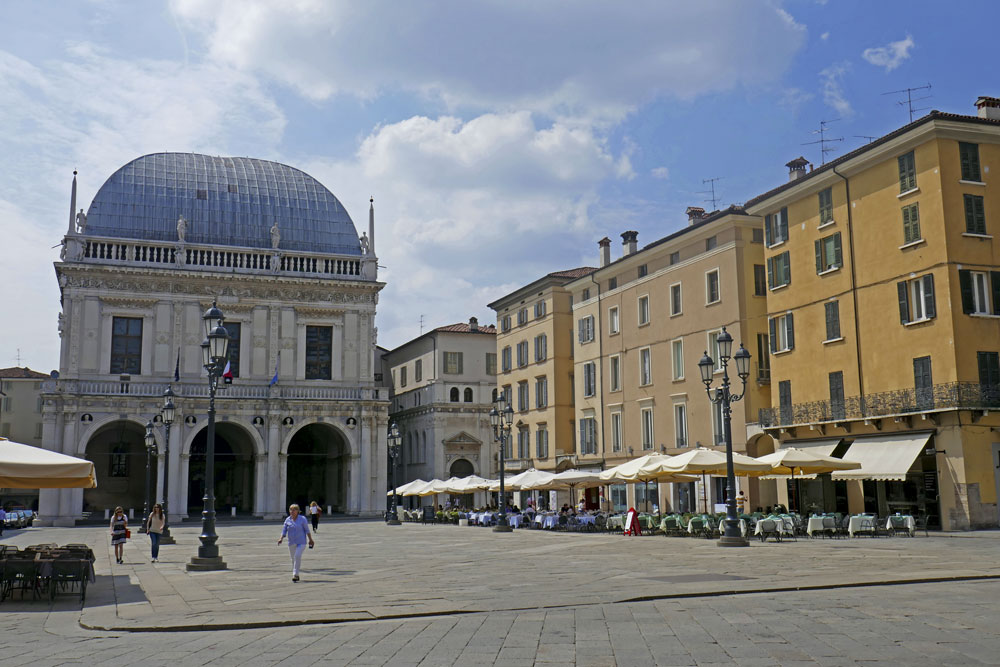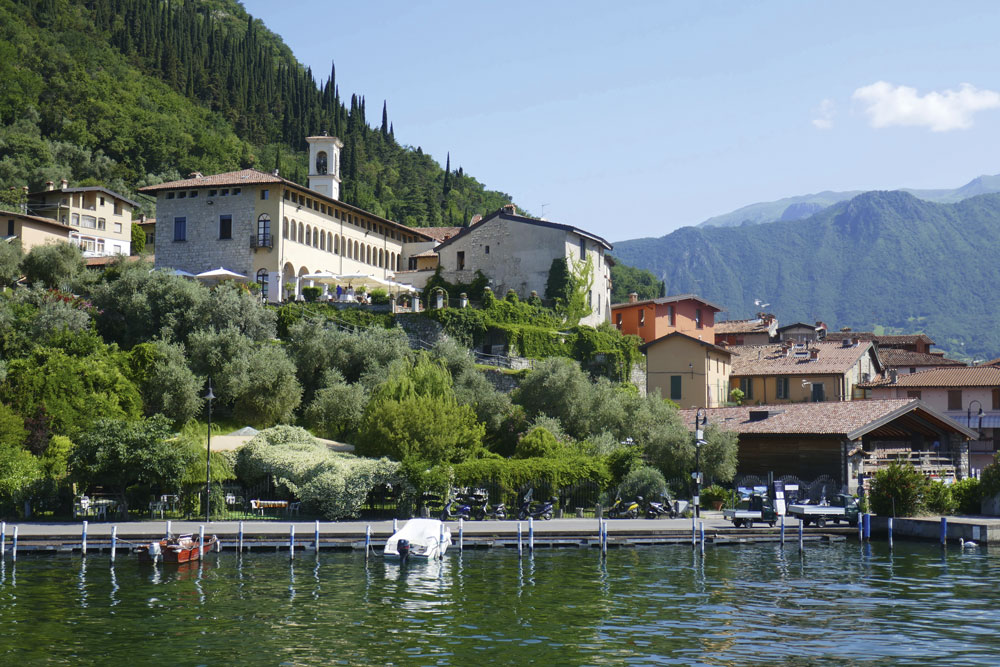Motorhome travel: Discovering the charms of Italy
Words and photos: Carol Kubicki
Three weeks in northern Italy with only one thing on my must-do list felt like glorious blank pages in my travel journal to fill as I wanted. My only plan was to see the Bedolina Map, one of the world’s oldest maps.
I love maps and read them like books, planning driving routes and walks from the lines on the page. After learning about the almost 3,000-year-old Bedolina engraved map on a large rock high in an Italian alpine valley I was eager to visit it.
We drove across the Italian border from Slovenia near Gorizia as I browsed through a free guidebook I had picked up about the natural protected areas in Italy’s Friuli Venezia Giulia. The photographs of interesting and beautiful places were inspiring and our plans for the next few weeks slowly started to firm up.
Friuli Venezia Giulia is a region of northeastern Italy bordering Slovenia and Austria, which has its own language, Friulian. We had bypassed this area on previous visits but quickly found it is packed with variety, from wildlife-rich flat coastal wetlands on the Adriatic to the splendour of the mountainous Dolomites.
We settled into a campsite near the lovely seaside town of Grado. This low-lying landscape has an excellent network of dedicated bicycle paths making cycling almost effortless. Our approach to the Adriatic island of Grado crossed a three-mile long bridge over the dramatic and panoramic waterscape of the lagoon.
Grado and its historical centre
Grado is a classy resort, with a harbour full of boats and a well-kept promenade. We sought out the town’s attractive historical centre and its two early Christian churches with recycled Roman columns and sixth century mosaics.
We made good use of the cycle routes. Heading inland we found Aquileia, an ancient Roman city with the remains of a Roman harbour and a basilica with early Christian mosaics in the crypt.
A few kilometres east of Grado we used the nature reserves guide to explore the Cavanata Valley. Cycling along quiet lanes we spotted flamingos, egrets and flocks of bee eaters. At Hotel Caneo, small boats are moored in shady creeks and we watched coypu swimming along the River Isonzo.
Returning to our campsite, we stopped at a roadside stall to buy strawberries and asparagus fresh from the fields.
Our peaceful (apart from the half-hour when our neighbour practiced his trombone!) woodland campsite on the lagoon shore had plenty of wildlife.
At the water’s edge we spotted a pair of African sacred ibis and, on the campsite, a nuthatch flitted among the branches around our ‘van and the comical antics of the jays amused us.
In the warm evenings we strolled around the site watching the dance of the fireflies accompanied by the repetitive mournful call of a scops owl.
Following a tip-off from a site neighbour we visited Palmanova, a town inside a sixteenth century Venetian star-shaped fort. We walked into the small town through one of its gates and were soon in the impressive Piazza Grande with six roads radiating from it, statues flanking each junction.
This lovely town was built as an experimental Utopian community as well as a defensive fortress city against the Ottomans. But, it struggled to attract residents and resorted to paying people to relocate.
The nature reserves guide came up trumps again, helping us discover the stunning Cornino Lake. This clear vivid-turquoise lake is surrounded by trees and high crags. Griffon vultures have successfully been reintroduced here and they circled above our heads as we walked the circumference of the lake.
The peak of Monte Festa and views over Lago di Cavazzo
The campsite receptionist was confident Monte Festa, a conical peak 1,055m (3,461ft) high, was an easy walk. Visible from the campsite, it looked tough. If we had known that it would take us five hours to ascend we might have reconsidered!
The climbing starts at the village of Interneppo, with a microclimate perfect for butterflies. Local artists have used the butterfly theme to create colourful wall murals and poetry.

We had magnificent views over Lago di Cavazzo from an overhanging platform and stumbled on the track through two dark tunnels cut through the cliff side. Hot and weary, we almost abandoned our trek 100m (328ft) from the top, but a clear, cold, spring saved the day. With replenished water bottles we took the steep path up to Monte Festa’s ruined fort that is testimony to the WWI battles fought here.
As we descended thunder rumbled around the valley, but we stayed dry and returned after eight hours of walking. Too weary to cook, we ate at the campsite bar looking back to Monte Festa across the lake.
Continuing to work our way through the guidebook, we discovered the breathtaking Cellina Gorge. After buying fresh bread and local cheese in the pretty lakeside village of Barcis, we cycled to the old road (now closed to traffic) that cuts through the gorge. Visitors pay a few euro and are given a hard hat to protect them from falling rocks from the unstable overhanging cliffs. The translucent turquoise Cellina torrent thunders between sculpted rocks below the road and I wimped out of crossing it via the Himalayan-style suspension bridge.
After a picturesque drive through alpine valleys above rushing blue rivers and below steep wooded slopes and craggy limestone summits, we reached the stunning Vajont valley in the Friuli Dolomites Regional Natural Park, our final and most remarkable discovery from the nature reserves guide.
In October 1963 the side of Monte Toc slid into the reservoir behind the massive Vajont Dam, creating a colossal wave that breached the dam, the water flooding down the valley below killing around 2,000 people.
Walking under the precipitous mountain, still denuded of trees, today this is a beautiful place with wild flowers and views to the pretty village of Casso clinging to the mountainside, but the shadow of that tragic night lingers. The town of Longarone was destroyed by the human-made tsunami. Rebuilt, it has a museum to the disaster with appalling photographs of the valley scoured of life and buildings and a long list of victims’ names.
Longarone, the city of ice cream
Today, Longarone badges itself Città del Gelato (city of ice cream) as, for over 50 years, a large ice cream trade fair has been held here in December. Somewhat emotional after the museum, I nevertheless set off in search of ice cream and we found a charming gelateria to indulge in superb Italian gelato.
We left Friuli Venezia Giulia, slowly heading west and nearer to the Bedolina Map. We walked the 13km (eight miles) circuit of Lago di Corlo in a thunderstorm and drove the switchback road over the 1,984m (6,509ft) Passo di Rolle on a showery day when we could only imagine the spectacular views.
Finding better weather and an idyllic campsite in a green valley near Predazzo in the southern Dolomites, we decided to linger and make use of the free walking map the campsite provides.
In sunshine we hiked up Monte Mulat, following a gushing mountain stream accompanied by the noisy clanging of bells from small herds of cows. We rested at a picturesque hut in meadows dotted with bright green larch trees and views to jagged snowy peaks. In the grass I found blue gentians and orchids and we spotted a marmot on the hillside.
Moving on, we crossed the wide valley of the River Adige and the scenic Passo Tonale to Ponte di Legno (which means wooden bridge). This delightful mountain resort didn’t disappoint; it has several covered wooden bridges and pretty buildings, mountain streams, chic shops and pavement cafés against an alpine backdrop.

In eager anticipation I hurried Anthony up the steep hillside from Capo di Ponte to the Archaeological Park of Seradina-Bedolina which protects over 50 engraved rocks. The Bedolina Map is at the furthest and highest point and, reaching the sandstone rock I had come so far to see, I was mopping my brow in the heat, unable to see the ancient etchings through dripping sweat.
A woman greeted me. “Caldo,” (hot) she acknowledged and I concurred. Looking up, I realised her lovely house and garden are idyllically set among the rock carvings. She offered two bunches of ripe cherries fresh from her tree and we sat on the rock enjoying the sweetness of the fruit and the panoramic view.
Revived, I was able to see the faded engravings on the rock that show an ancient neighbourhood, my fingers following the paths connecting fields and huts. These are not idle doodles and I connected with the creativity and patience of an early cartographer. Later, we walked around the rest of this incredible concentration of rock art finding fascinating carvings of people ploughing, fighting and hunting.
We followed the valley south to Lake Iseo, receiving a cheery welcome at Camping Covelo and a complimentary glass of local wine. The wine might explain why we splashed out on a lakeside view, but we never regretted it.
Swallows swooped across the lake and the mallards and grebes had ducklings.
Every evening we sat outside listening to the gentle sound of the waves lapping on the shore and watching the sun go down across the lake.
Taking the train to Brescia
From Iseo we took the train to Brescia, a city perfect for sauntering from one impressive square to the next.

We were keen to visit the Santa Giulia Museum and spent hours in this large and complex monastery site with three churches. The self-guided tour helps visitors make sense of the site’s history while wandering at your own pace.
There are dazzling and colourful frescoes, a Romanesque crypt and Renaissance cloisters, all enhanced with superb and well-placed modern sculptures.
Villas from Roman Brescia were excavated in the monastery garden and we admired the mosaics and walls from walkways. Artefacts and works of art from Roman to Venetian periods of Brescia’s history are displayed; there’s something for everyone’s interest, including the magnificent Roman life-size winged Victory statue displaying the rich patina of ancient bronze. Make sure you leave enough time to fully explore this remarkable museum.
On a sunny morning we caught the ferry from Iseo to Peschiera Maraglio on Monte Isola, a verdant hilly island in Lake Iseo that combines charming red-roofed towns with olive trees and an attractive shoreline.

We walked the seven-mile circumference of the island on the narrow road that is used by everyone: islanders on scooters and three-wheeled Piaggio Apes (based on a Vespa scooter), cyclists, the bus and a scaled-down police car.
By the lake we watched grebes carrying chicks on their backs and spotted red-crested pochards. We had coffee high above the lake in Menzino and explored the medieval narrow streets of Siviano, the island’s capital.
We then crossed northern Italy to France on the autostrada the next day. Our lack of planning had resulted in a perfect trip, thanks to some useful tourist guides, recommendations and good campsites.
This part of northern Italy had got under my skin. We had found an abundance of interesting and beautiful places and we will be back, with or without a plan.
This travel article was originally published in the September 2019 edition of MMM magazine. Buy digital back issue copies here or check out our full archive of motorhome and campervan travel features here.








Recent Updates
Engine management lights: all you need to know
What is the engine management light? What does it mean, and what do I have to do? ...
Motorhome air suspension: all you need to know
Motorhomes are heavy and the additional weight of equipment and height of the bodywork can increase the loads ...
Motorhome WiFi: how to get better motorhome internet
Staying connected on the move is more and more essential, so relying on campsite WiFi isn't an option – here ...
A class of their own - our guide to A-class motorhomes
Thinking of trading up to an A-class, or even going straight to the top of the motorhome tree? We guide you ...
Explore overseas on a motorhome dream tour
Enjoy exotic travel in a campervan or motorhome by hiring, swapping with someone else or exporting your ...
Motorhome water systems: everything you need to know
On-board water is an important part of every motorhome – here’s everything you need to know ...
Campervanning in Europe: what you need to know
Whether you're planning a leisurely drive through the French countryside, navigating bustling city streets in ...
Campervan security: all you need to know
With thefts on the increase, it’s important to know how to keep your campervan secure and prevent campervan ...
Campervan furniture: everything you need to know
Our campervan experts guide you through all the essentials for your campervan, including tables, chairs, ...
Campervan finance: how to fund your purchase
Here we look at the different types of campervan finance available, to help you decide what’s the best option ...
Other Articles
Britain’s best used motorhomes
Want a great motorhome without paying the premium for a new one? Here's a guide to the best you can get in the pre-owned market for each layout, ...
Which motorhome? Choosing the perfect motorhome for you
Choosing a motorhome or campervan is one of the biggest buying decisions you’ll ever make, so it's important ...
Campervan washroom essentials: stay fresh on the road
Our guide will take you through the campervan washroom essentials you'll need so you're well-prepared for ...
Dogs in campervans: all you need to know
Follow our advice and your dog will enjoy campervanning as much as you do ...
Electric campervans: all you need to know
Our guide will take you through everything you need to know about electric campervans and what the future ...
Motorhome electrics: a complete guide to your motorhome electrical set-up
Motorhome electrics can dramatically enhance the convenience and comfort of your vehicle – but they can be ...
Lighting for campervans: all you need to know
We guide you through all the lighting options available for you and your campervan, including interior ...
Electric bikes for motorhomes: our ultimate guide
Read our comprehensive guide to electric bikes for motorhome owners, helping you add electric power to your ...
Our guide to 'cheap' motorhomes in 2024
If you're on the hunt for an affordable new motorhome, this is the best place to start – we've rounded up a ...
Campervans in winter: all you need to know
Here's your guide to preparing your campervan for the colder months, whether you will be using it or putting ...